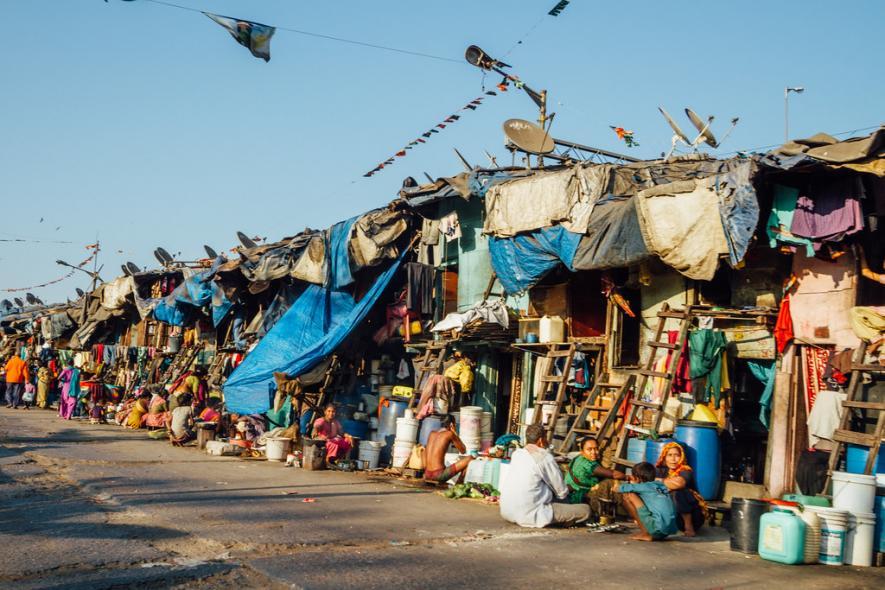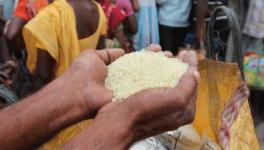UN Poverty Estimates for India: A Simply False Euphoria

Representational image. | Image courtesy: flickr
On April 3 this year, the minister of state for planning, Rao Inderjit Singh, said in the Rajya Sabha that the government had no data after 2011-12 for estimating poverty, and therefore had no idea how many people had been lifted out of poverty since then. On July 18, however, the UNDP (United Nations Development Programme) announced that between 2005 and 2019, India had lifted 415 million persons out of poverty; it had of course no information for the post-pandemic period, but for the pre-pandemic period what it said generated much hype.
What was missed in this hype, however, was not only that the UNDP’s concept of poverty was vastly different from what is usually meant by the term, but also that the UNDP concept is neither theoretically robust nor statistically well-founded. The euphoria created by it was simply false.
India’s official poverty estimates, though no longer directly based on nutritional deprivation, still take nutrition as a point of departure; and the NSS (National Sample Survey) large sample consumer expenditure surveys provide the statistical basis for these estimates. There has been no poverty estimate for the years after 2011-12 because: the results of the next survey, for 2017-18, were suppressed by the Central government and there have been no further surveys since then.
Read Also: Over 200 Scholars Demand Release of ‘Junked’ NSO Report on Consumer Spending
The UNDP by contrast takes a number of indicators, assigning them specific weights to arrive at a composite measure. Among these indicators are: whether the body mass index is below 18.5kg/m2; whether any child below the age of 18 has died in the family in the previous five years; whether any household member aged “school entrance age plus six years” or older, has completed at least six years of schooling; whether any school-aged child is not attending school up to the age at which he or she would complete class eight; and so on.
Now, in any society undergoing “modernisation” these indices should be showing an improvement: the death rate for children under 18 drops; peer pressure and aspirations make parents send their children to school (especially if school attendance entitles a child to free mid-day meals); completing at least six years of schooling becomes quite common even when children drop out of school later; and so on. The satisfaction of all these criteria, however, is perfectly compatible with the family’s real income shrinking, in the sense of commanding a smaller and smaller bundle of goods. In other words, even when families are becoming worse off, and hence even when poverty in the country, as usually understood, is increasing, the UNDP measure could show a decline in poverty.
Read Also: First In 46 Years, Food Consumption Falls, Modi Govt Scraps Consumer Spending Survey
Put differently, the UNDP measure, which is supposed to reflect what it calls “multi-dimensional poverty”, makes a decline in poverty virtually synonymous with “modernisation”. Genuine poverty, however, is concerned not with the mere occurrence of “modernisation” but with the question of who bears the cost of modernisation, whether the working people or the rich. And nothing in the UNDP measure is at all concerned with this latter question.
The fact that “modernisation” has been occurring rapidly in India, and substantially under the aegis of the State, is undeniable; and it is this which shows up in the UNDP measure. But poverty, as commonly understood, is concerned, as we have seen, with the costs of modernisation: whether the fiscal means for the social provisioning for “modernisation” come at the expense of the working people’s consumption; and whether for “modernising” their lives in keeping with the changing times the family has to experience a decline in its living standard that is manifested above all in its food consumption (since whenever the family’s budget gets stretched it usually cuts back on its food consumption).
This incidentally is the rationale for taking nutrition as the basic criterion for estimating poverty. It is not as if nutrition is all that counts (as is assumed wrongly by those who accuse scholars emphasising nutritional deprivation as “calorie fundamentalists”); but nutritional deprivation is the litmus test that shows up overall immiserisation. Nutritional intake is a proxy for real income, indeed a better indicator of it than deflating money income by some necessarily questionable consumer price-index. Worsening nutritional intake (except at the top where such intake is deliberately reduced for health reasons to avoid “over-consumption”), is a fairly reliable symptom of the family becoming worse off.
Of course, UNDP officials would argue that they are not ignoring undernutrition; after all 1/6 weight of the index they prepare is given to nutrition. But what they mean by nutritional deprivation is something quite different. They mean not a decline in calorie or protein intake, but the “body-mass index” of a person falling below 18.5 kg/m2.
Nutritional deprivation in terms of reduced calorie or protein intake has a number of effects: it reduces the capacity to work; it makes the person prone to diseases, and so on. A reduction in the body mass index (BMI) can be one such effect. The UNDP, therefore, takes just one possible consequence of nutritional deprivation, a fall in BMI, and that too only when its value falls below a threshold, namely 18.5 kg/m2, and makes that the sole criterion of assessing such deprivation.
In fact, a reduction in BMI per se does not mean that it would necessarily fall below 18.5 kg/m2. Nutritional deprivation can go on for quite some time, without the BMI falling below the specified threshold. For instance, a person who is 5 ft.8 inches tall has to lose 18.8 kg before his BMI goes down from 25 kg/m2 to 18.5 kg/m2; and skimping on food can bring about such a loss of weight only over a rather prolonged period. Nutritional deprivation, in short, can affect a person’s well-being and health without being captured in the UNDP poverty measure; and this is in addition to the fact that it has been assigned a low weight of only 1/6.
The contrast between the UNDP estimate and what is revealed by the NSS large sample survey comes out clearly from the following. The UNDP estimated that in 2005-06 there were 645 million people in India who were “multi-dimensionally” poor and that this number had dropped to 370 million by 2015-16. This means that 275 million people had been lifted out of poverty between these two dates (and another 140 million were to be lifted out of poverty between 2015-16 and 2019-20.
The 75th Round of the NSS in 2017-18, by contrast, pointed out that in rural India between 2011-12 and 2017-18, the per capita real spending on all goods and services, fell by 9%, a finding so startling that the Central government withdrew the data from the public domain mere hours after releasing it. (The fall of 9% quoted here is from the summary results that some individuals had managed to download, before these were removed; some discussion of these results also appeared in the press at the time).
The proportion of the rural population not able to access 2,200 calories per person per day, which was the original benchmark actually applied by the Indian Planning Commission for estimating rural poverty, was 68% in 2011-12. This itself had gone up from 58% in 1993-94; but by 2017-18 this figure had gone up further to an estimated 77%. Thus, over a part at least of the period during which the UNDP estimates that millions were lifted out of “multi-dimensional” poverty, there was such a sharp increase in rural poverty, as the term has been always understood, that the government of India decided, no doubt opportunistically, to suppress the data altogether!
So far, we have talked of rural poverty. On the eve of the pandemic the “usual status” unemployment rate in India had reached a level higher than at any time during the previous 45 years, from which one can safely infer that poverty, as normally understood, could not have declined, but is likely to have increased, taking urban and rural areas together, contrary to the impression given by the UNDP.
The foregoing is a criticism not of the UNDP’s measure per se, but of calling it a measure of poverty. What has been happening to poverty is a hotly debated issue in India. The UNDP has jumped into this debate with a rosy picture of poverty-removal, but by using the term ‘poverty’ in a completely different sense from everybody in this debate. Unless one keeps this difference firmly in mind, one would be hard put to explain how a country that has slid to the 107th rank among the 121 countries in the World Hunger Index in 2022, could simultaneously have seen hundreds of millions of people “lifted out of poverty”!
Get the latest reports & analysis with people's perspective on Protests, movements & deep analytical videos, discussions of the current affairs in your Telegram app. Subscribe to NewsClick's Telegram channel & get Real-Time updates on stories, as they get published on our website.






















